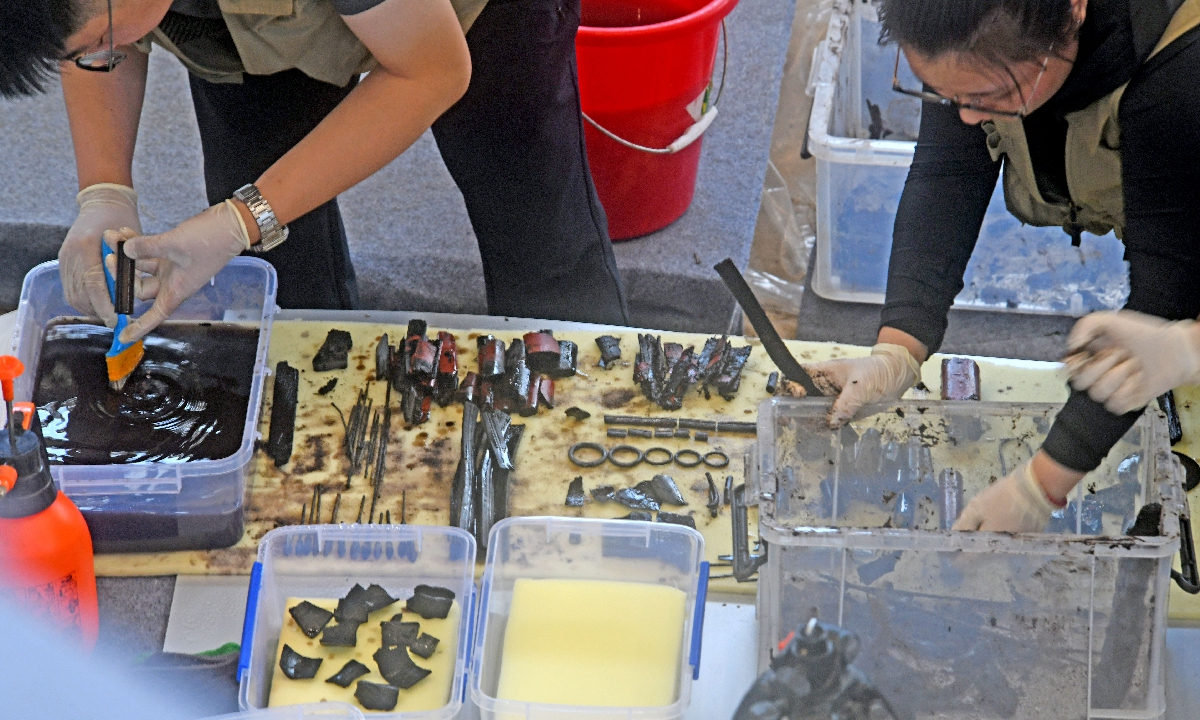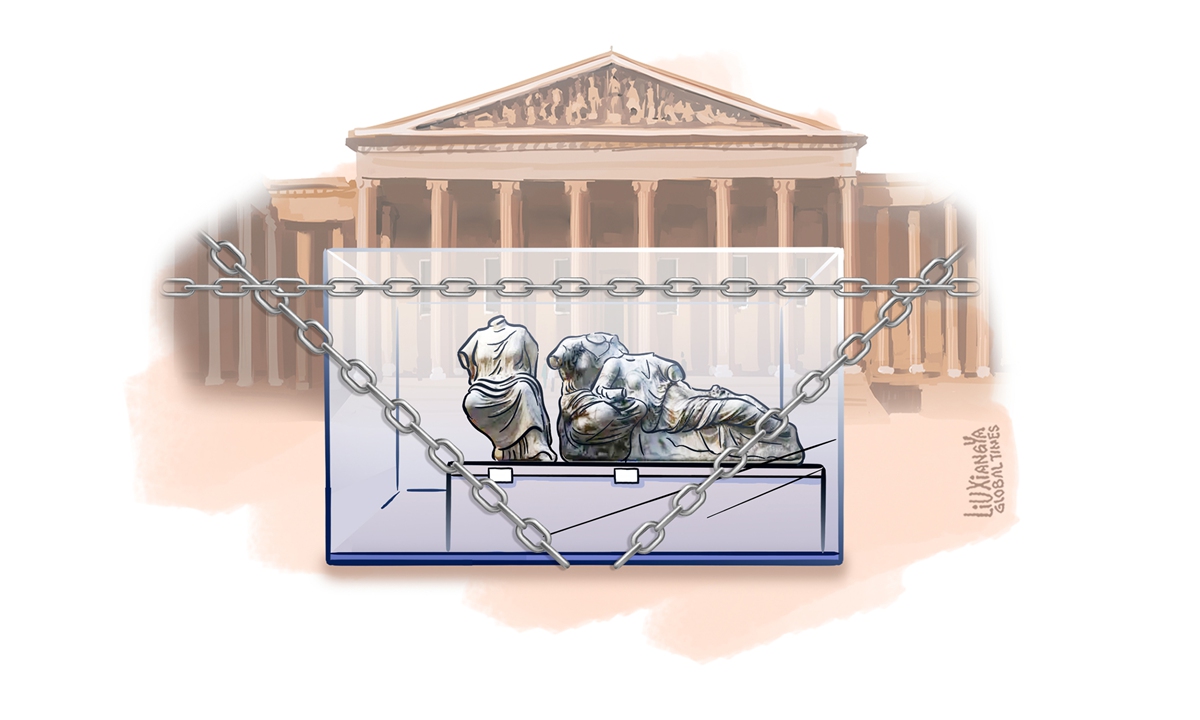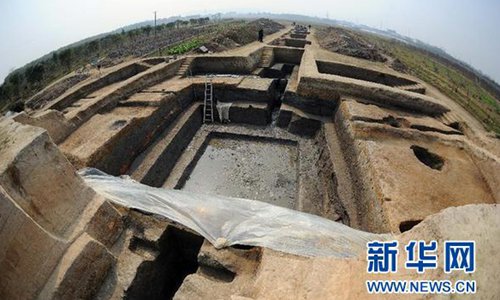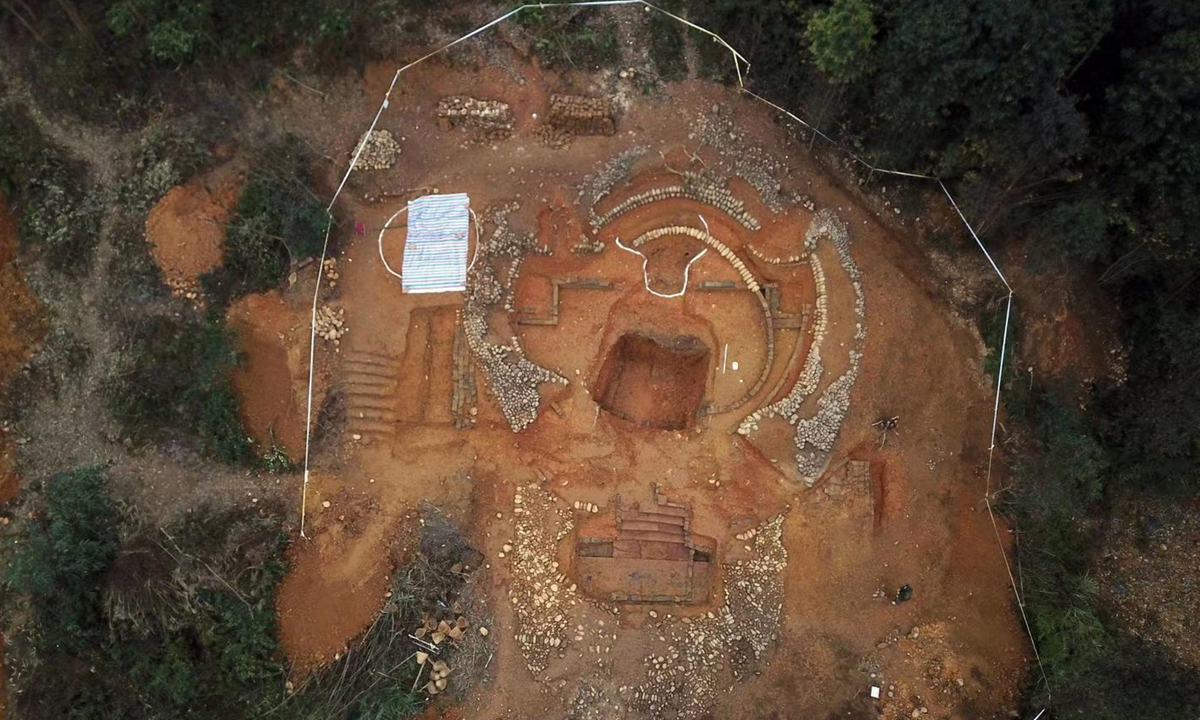
Photo: IC
Aiming to make digital copies of artifacts discovered at the Wuwangdun Tomb, a research team at the Anhui University of Arts recently kicked off a 3D scanning modeling project, which the team's leader Xia Shoujun described it as a "lengthy" project involving a prolific number of research tasks.
Located in East China's Anhui Province, the Wuwangdun Tomb dates back to more than 2,200 years ago. In April and May, major advances were made that allowed researchers to identify the tomb's owner as King Kaolie of the ancient Chu state during the Warring States Period (475BC-221BC). This makes the tomb the highest-ranking tomb ever discovered in China, while its size makes it the largest tomb discovery.
The current research was carried out under a "cooperation agreement" that was recently been signed between the Design School of Anhui University of Arts and the Anhui Provincial Institute of Cultural Relics and Archaeology.
Xia's team, around a total of 10 experts and students, are using scanning and modeling techniques to digitize the artistic designs found on the unearthed relics. Lacquer wares are a representative relic from the Wuwangdun site. Xia told the Global Times that designs like the "phoenix and bird decoration" seen on such wares carry both "aesthetic and research value."
"What we do is to use digital painting, 3D scan and remodeling technology to sketch out these artifacts' shape, structure and decorations. Precious artifacts like these are normally collected by museums, but by using digital methods means, these legacies can be provided better open resources to the public and researchers in the future," Xia told the Global Times.
"The tomb is valuable not only because it is around 200 soccer pitches in size, but also due to the extremely fine bronze and lacquer burial objects that have been unearthed, which unveil the burial customs and cultural traditions that existed during the Warring States Period," archaeologist He Jierao told the Global Times.
The team's "go-digital" strategy has also been applied to study the shape and structure of ancient objects such as China's largest bronze ding, a tripod ceremonial food vessel that was unearthed from the site. Ding was a type of ancient Chinese cauldron, a symbol of power that was commonly used during ritual events.
On May 18, the ding was excavated from the Wuwangdun site. At 111.5 centimeters in height and 88.9 centimeters in diameter, the artifact was exceptionally large.
Due to the large quantity of relics at the site, the team's digitization efforts have been progressing slowly. Yet, new findings have already been made, including a sphere-shaped bronze object that was extremely rare during that historical period.
"Multidiscipline" is a key word to describe the current collaboration between the Design School of Anhui University of Arts and the Anhui Provincial Institute of Cultural Relics and Archaeology.
By relying on art experts' aesthetic sense and drawing skills, the beauty of Wuwangdun relics can be better interpreted. Xia told the Global Times that their sketches are more refined and more objective to the original.
"Artists and designers are crucial to archaeological researchers, especially on tasks like restoration and exhibition," Xue Yu, an art historian who has consulted on several archaeological projects, told the Global Times.
In June, the Anhui Provincial Institute of Cultural Relics and Archaeology established cooperation with Anhui University and the University of Science and Technology of China (USTC).
Teams from both institutions will get a chance to see all 3,000 relics, but study them from the perspective of different subjects, such as determining how the site's unearthed texts and images can be used in public education.
"Chinese archaeology is flexible and has creative paths such as collaborating with cross-subject school teams, extensive use of technology and also engaging the public in archaeological projects," He told the Global Times.



